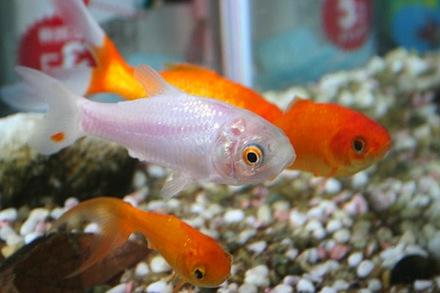Choosing a pet fish for your child is more than just about adding a little fun to your home—it’s a fantastic opportunity to help your kid develop responsibility and learn to care for a living creature. However, not all fish are created equal. There are so many different species, and each has its own specific care requirements. Understanding which types of fish are easier to manage is key to ensuring that your child enjoys the experience without getting overwhelmed.
Why Fish Make the Best Pet for Kids
Fish are among the best pet options for kids for several reasons. First, they take up very little space, and they’re generally low-maintenance. They don’t require constant attention, making them ideal for young children who are just starting to learn about pet care.
However, it’s crucial to choose the right type of fish. Not all fish can adapt to the care level of children. Some species are delicate and need specific environments, which could easily overwhelm a child. Therefore, it’s important to consider these key qualities when choosing a pet fish:
- Low-maintenance: Ideal for beginners, these fish are easy to care for and require minimal attention.
- Hardy: Fish that can adapt to a variety of conditions without getting sick.
- Peaceful: Species that can live peacefully with others, preventing aggression in the tank.
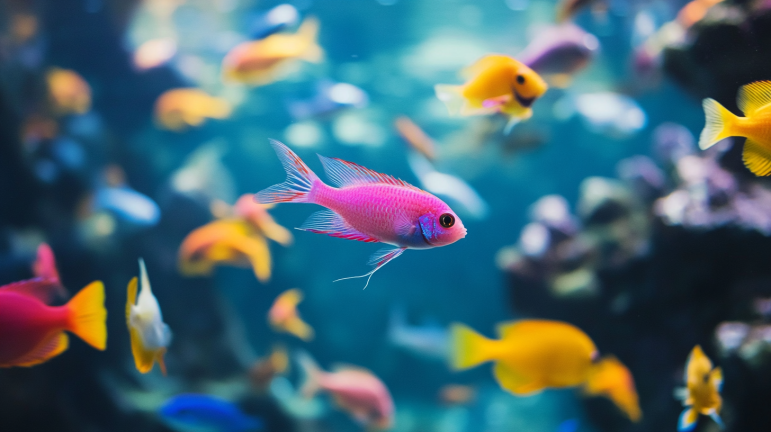
Key Factors to Consider When Choosing Fish for Kids
Selecting the best fish for children involves several practical considerations to ensure both your child and the pet have an enjoyable experience. Here’s a checklist of key factors to think about:
- Tank Size: The aquarium should be large enough to accommodate the fish as they grow. For example, goldfish need significantly more space as they mature.
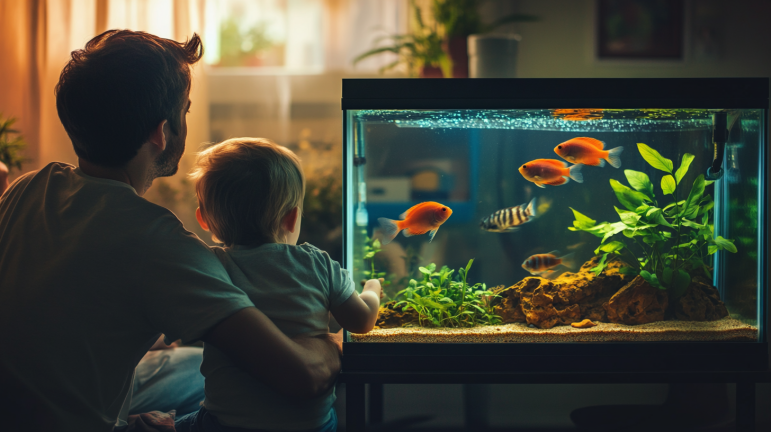
- Fish Temperament: Look for species that are calm and non-aggressive to ensure the fish are stress-free and your child has a relaxing pet to care for.
- Maintenance Needs: Choose fish that match your child’s experience level with pets. Some fish are easier to care for than others.
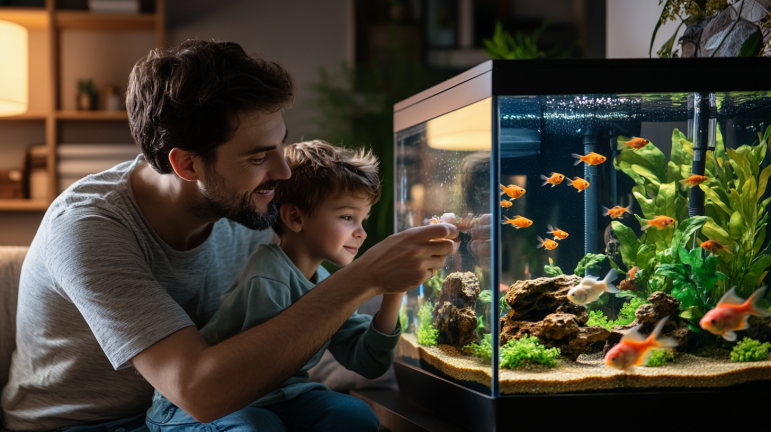
- Lifespan: A longer-lived fish can help children learn about long-term responsibility.
- Compatibility: If you plan on having multiple fish, be sure that the species you select can cohabit peacefully.
How to Choose the Right Aquarium for Kids’ Pet Fish
The aquarium you choose will play a vital role in your fish’s health. Ensuring you pick the right size and type will provide a stable environment for your child’s pet. Here are a few things to keep in mind:
- Tank First, Fish Later: Always purchase the tank before buying the fish. This way, your new fish will have a proper home ready for them as soon as you bring them home.
- Size Matters: For each inch of fish, aim to provide at least one gallon of water. However, some fish, like goldfish, require even larger spaces.
- Avoid Fish Bowls: Although popularized in cartoons and movies, fishbowls are not suitable for most fish. They lack filtration and proper heating, leading to health problems.
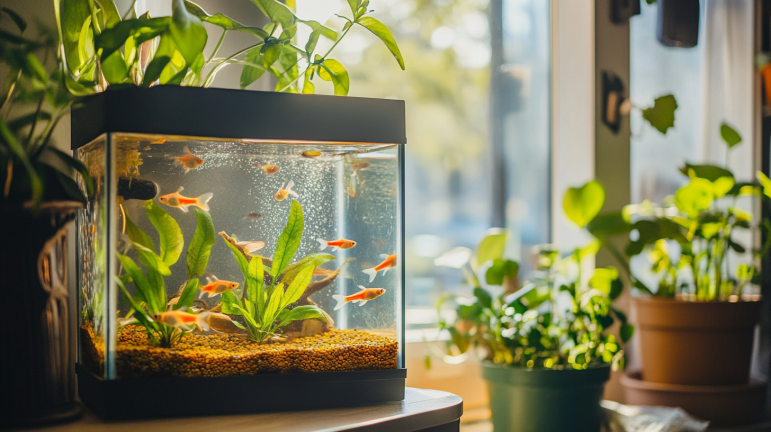
Understanding pH Levels for Healthy Fish
Water quality is essential for the well-being of your fish. Each species requires different pH levels to thrive. Here’s what you need to know about keeping the water in good condition:
- Ideal pH Range: Most fish prefer water with a pH between 6.4 and 7.8.
- High pH Fish: Species like angelfish and discus fish thrive in higher pH environments.
- Monitoring Water Quality: Use a water testing kit to check the pH and adjust accordingly with pH-balancing chemicals if necessary.
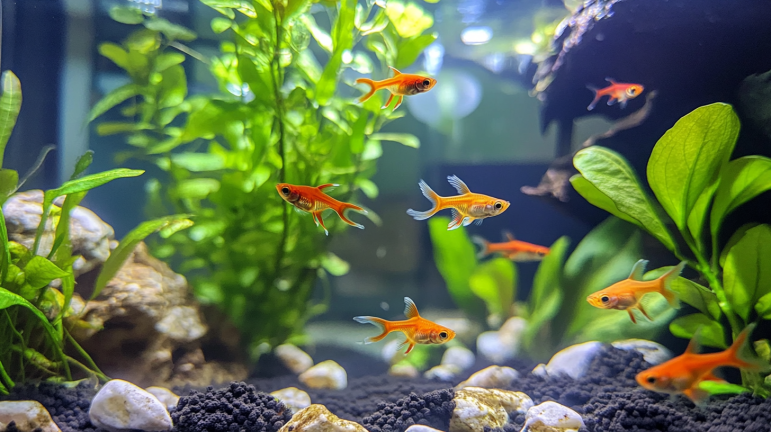
For children, it’s best to choose fish species that can tolerate minor fluctuations in water quality, making the experience less stressful for both the child and the fish.
Freshwater vs. Saltwater Fish: Which Is Better for Kids?
When deciding between freshwater and saltwater fish, it mostly depends on your family’s experience and the level of care your child can provide. For most families, freshwater fish are the preferred choice due to their simplicity.
- Freshwater Fish: These fish are easier to maintain, more affordable, and ideal for beginners. Common choices include goldfish, guppies, and tetras.
- Saltwater Fish: Although these fish are more colorful and exotic, they require a higher level of care and are better suited for experienced aquarium enthusiasts.
For kids, freshwater fish are the better option, thanks to their low-maintenance needs and beginner-friendly care.
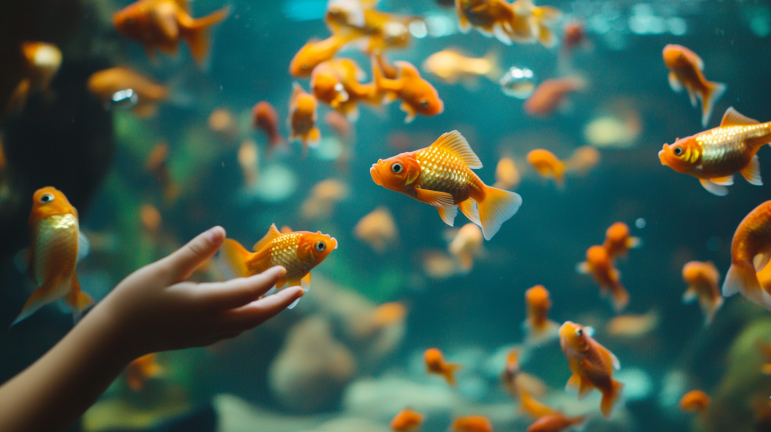
Recommended Low-Maintenance Fish for Beginners
There are several fish species that are ideal for kids due to their hardy nature and simple care needs:
- Guppies: Colorful and adaptable, guppies are great for freshwater aquariums.
- Mollies: Easy to care for and come in many different colors.
- Platies: Friendly and social, perfect for community tanks.
- Betta Fish: A great choice for single-fish tanks, they require minimal space and maintenance.
- Angelfish: Small and hardy, these fish thrive in schools and are perfect for beginners.
These fish are not only beautiful but also resilient, making them a great choice for kids.
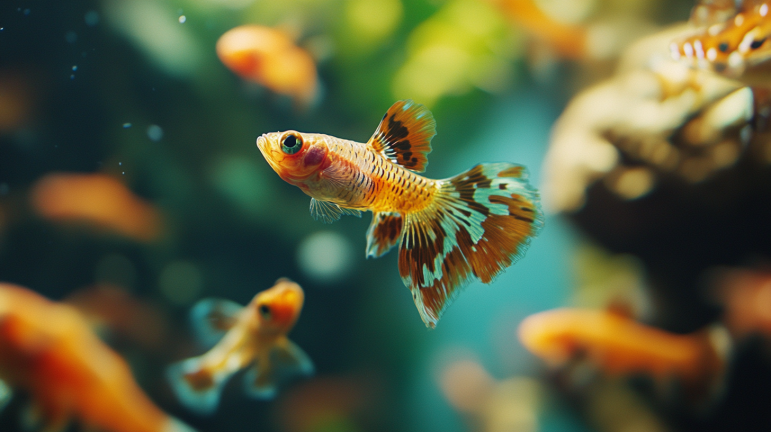
Involve Your Kids in Choosing the Best Pet Fish
Involving children in the process of choosing their pet fish can be both fun and educational. From selecting the fish to setting up the aquarium, this hands-on experience helps kids develop decision-making skills and a sense of responsibility. It’s a wonderful way to bond and educate your child about caring for a living creature.

Conclusion
Selecting the right pet fish for your child isn’t just about adding a new creature to the home—it’s an opportunity to teach valuable life skills, such as responsibility, care, and patience. By choosing low-maintenance, peaceful, and hardy fish, you ensure that both your child and their new pet have a fulfilling and manageable experience. A little bit of thought can create a positive and rewarding pet-owning journey for your child.







